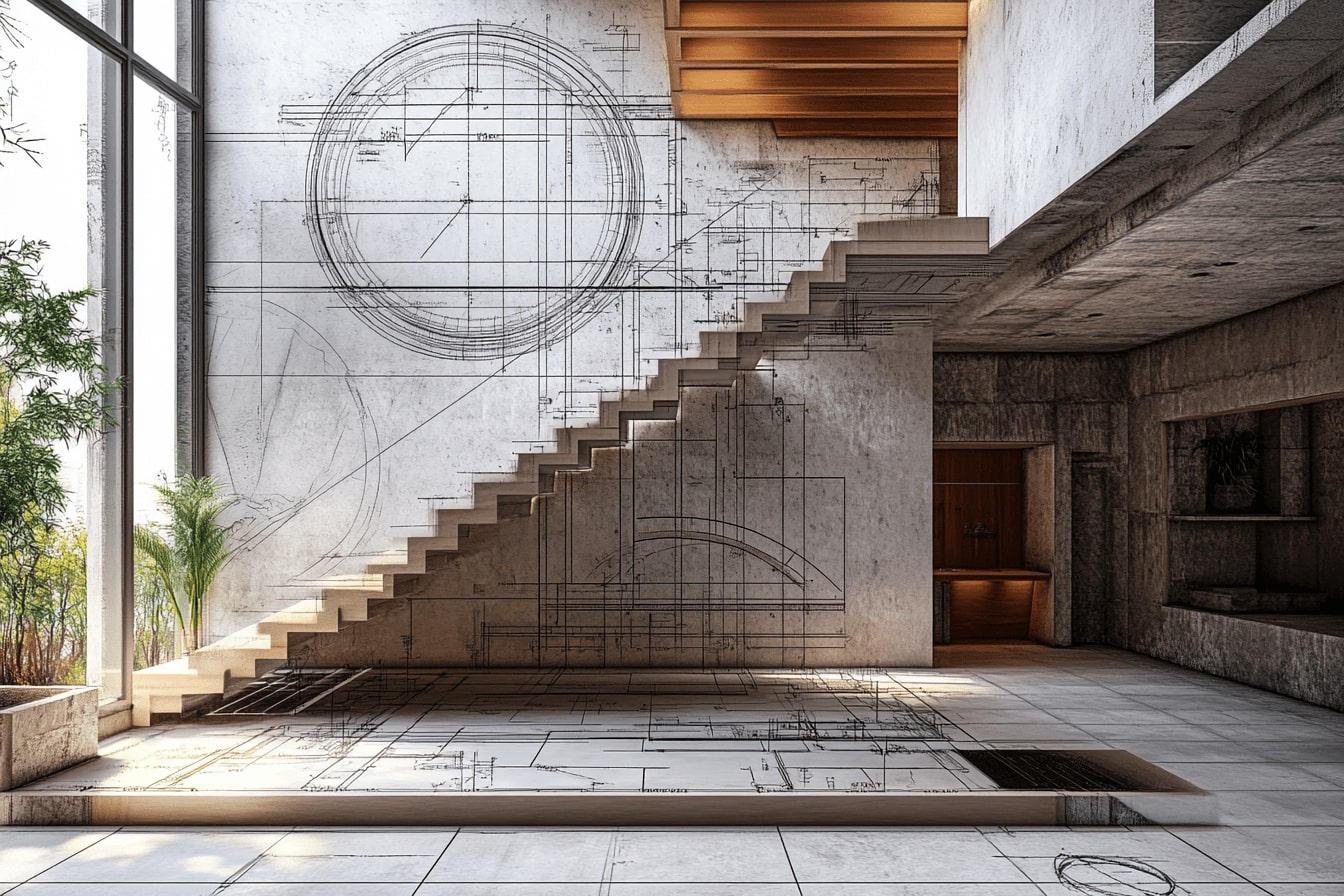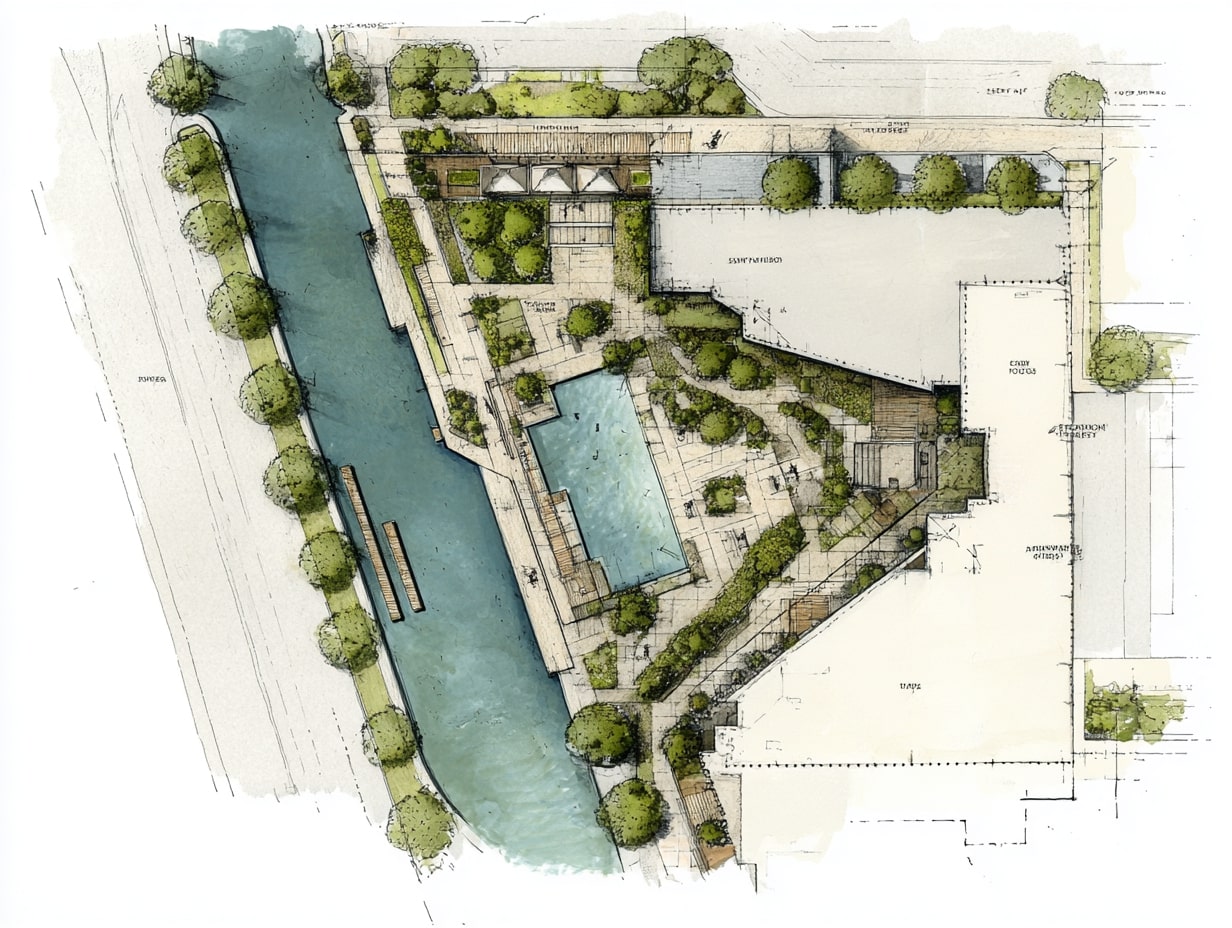- Home
- Articles
- Architectural Portfolio
- Architectral Presentation
- Inspirational Stories
- Architecture News
- Visualization
- BIM Industry
- Facade Design
- Parametric Design
- Career
- Landscape Architecture
- Construction
- Artificial Intelligence
- Sketching
- Design Softwares
- Diagrams
- Writing
- Architectural Tips
- Sustainability
- Courses
- Concept
- Technology
- History & Heritage
- Future of Architecture
- Guides & How-To
- Art & Culture
- Projects
- Interior Design
- Competitions
- Jobs
- Store
- Tools
- More
- Home
- Articles
- Architectural Portfolio
- Architectral Presentation
- Inspirational Stories
- Architecture News
- Visualization
- BIM Industry
- Facade Design
- Parametric Design
- Career
- Landscape Architecture
- Construction
- Artificial Intelligence
- Sketching
- Design Softwares
- Diagrams
- Writing
- Architectural Tips
- Sustainability
- Courses
- Concept
- Technology
- History & Heritage
- Future of Architecture
- Guides & How-To
- Art & Culture
- Projects
- Interior Design
- Competitions
- Jobs
- Store
- Tools
- More
The Importance of Scale Design in Architecture: Enhancing Space and Harmony
Explore the transformative power of scale design in architecture. Learn how proportion and harmony influence our interactions with spaces, from historic monuments to modern skyscrapers. Discover the principles of scale, the impact of technological advancements, and the importance of balancing human comfort with functional aesthetics for creating meaningful environments.

When we think about architecture, we often focus on the grand structures and intricate details. But one crucial element that shapes our built environment is scale design. It’s the unsung hero that ensures buildings feel just right, whether we’re standing in a cozy home or a towering skyscraper.
Scale design in architecture isn’t just about size; it’s about proportion and harmony. It influences how we interact with spaces and how those spaces make us feel. By mastering scale, architects create environments that are not only functional but also aesthetically pleasing, enhancing our daily lives in subtle yet profound ways.
Table of Contents
ToggleImportance Of Scale Design In Architecture
Scale design in architecture directly influences how occupants perceive and interact with spaces. Proper scale ensures that buildings feel comfortable, functional, and aesthetically pleasing. Elements like doors, windows, and ceilings must be proportionate to create a harmonious environment.
Architects use scale to establish a visual relationship between various parts of a building. This relationship helps in defining the hierarchy of spaces, making it easier for occupants to navigate and understand their surroundings. When scale is thoughtfully considered, spaces can evoke a sense of intimacy, grandeur, or utility based on their purpose.
Ignoring scale can lead to spaces that feel either cramped or overwhelming. For instance, overly large rooms may feel impersonal, while small rooms can become claustrophobic. Properly scaled design allows us to optimize space usage, enhance functionality, and improve overall user experience.
Historical buildings are prime examples of successful scale design. Structures like the Parthenon or the Taj Mahal use scale to create awe and balance, contributing to their lasting appeal. Modern architecture also benefits from scale, with skyscrapers and public spaces needing precise dimensions to function effectively within urban landscapes.
Studies show that human comfort is closely tied to the scale of architectural features. Researchers found that ceiling height impacts cognitive function and mood. Therefore, architects must consider human dimensions and ergonomics in scale design to create spaces that promote well-being.
Historical Evolution Of Scale In Architecture
Scale in architecture has a rich history shaped by cultural, technological, and functional considerations. From ancient to modern times, scale has evolved to meet changing needs and aesthetics.
Ancient Architectural Scale
Ancient builders emphasized monumental scale to convey power and divinity. The Great Pyramids of Giza, for example, showcased massive proportions to honor the Pharaohs and their journey to the afterlife. In Greece, the Parthenon featured precision in proportionality, ensuring visual harmony and balance.
Roman architecture also demonstrated advanced scale design, integrating large public spaces like the Colosseum for social and political purposes. The use of columns and arches not only supported structural integrity but also maintained aesthetic proportionality.
Modern Architectural Scale
Modern architecture focuses on functional scale, driven by technological advances and urbanization. Skyscrapers, like the Burj Khalifa, utilize vertical scale to maximize land use in dense cities. Architects maintain human scale within these towering structures through elements like accessible entryways and human-friendly interior proportions.
Public spaces, such as plazas and transportation hubs, are designed to accommodate large crowds efficiently while maintaining navigability. By considering factors like the flow of movement and human interaction, modern architects create spaces that are both functional and inviting.
Throughout history, we see that scale in architecture adapts to context, function, and cultural significance, proving its timeless importance in creating meaningful built environments.

Principles Of Scale Design
Principles of scale design crucially shape our perception of architectural spaces. Let’s delve into the essentials that guide effective scale design.
Proportion And Balance
Proportion and balance determine the relationship between different elements in a structure. Proper proportion ensures that parts of a building relate harmoniously. For example, door height relative to ceiling height can impact spatial perception. In classical architecture, the Golden Ratio often guided these proportions, ensuring aesthetic appeal. Modern architects also leverage mathematical ratios to achieve visual balance, making spaces feel more cohesive and comfortable.
Human Scale
Human scale focuses on aligning architectural elements with human dimensions and ergonomics. Ensuring elements like seating, counters, and walkways match average human measurements creates a comfortable environment. Ceiling height is an excellent example—higher ceilings often invoke openness, while lower ceilings can create a sense of intimacy. Research shows that people experience enhanced cognitive function and better mood in spaces scaled to human proportions, underscoring the necessity of considering human scale in design.
Technological Advances Influencing Scale
Technological advances significantly shape how scale design in architecture evolves. Digital tools and material innovations play crucial roles in this transformation.
Digital Tools
Digital tools revolutionize architectural scale design. Computer-aided design (CAD) software allows architects to create precise scalable models. These models enable accurate simulations, ensuring optimal proportion and harmony in built environments. For instance, Autodesk’s AutoCAD and SketchUp offer functionalities that streamline the design process.
Building Information Modeling (BIM) software enhances scale management. Programs like Revit facilitate collaborative workflows, integrating multiple dimensions of scale-related data. BIM enables architects to visualize complex structures, ensuring proportional consistency throughout the project.
Virtual reality (VR) and augmented reality (AR) technologies offer immersive design experiences. These tools allow architects to experience spaces in full scale before construction. This immersive visualization helps identify potential scale-related issues early, enhancing the final outcome’s accuracy and comfort.

Material Innovations
Material innovations also influence scale design. Advanced materials allow architects to redefine traditional scale restrictions. For example, carbon fiber and high-strength concrete enable slender structures while maintaining strength and stability.
Sustainable materials contribute to scalable design by promoting environmental harmony. Innovations like cross-laminated timber (CLT) allow for high-rise wood buildings, combining aesthetics with sustainability. These materials provide new opportunities for creating large-scale yet eco-friendly structures.
3D printing technology reshapes material use in architecture. This technology offers precision in creating scaled components, accelerating the construction process. Notable examples include 3D-printed building sections and intricate façade elements, which maintain proportional integrity while being cost-effective.
Digital tools and material innovations significantly influence scale design. These technologies provide precision, sustainability, and new design opportunities, advancing the architectural field.
Case Studies: Successful Scale Design
Examining successful scale design can reveal how architects achieve both functionality and aesthetics. We’ll review iconic architectural examples and contemporary projects to highlight effective scale implementation.
Iconic Architectural Examples
The Parthenon in Athens epitomizes precise scale design with its proportional harmony. Built in the 5th century BCE, the Parthenon uses the Golden Ratio to create a sense of balance and order. Each column adjusts slightly to counteract optical illusions, ensuring the structure appears perfectly straight and proportionate.
The Taj Mahal in India showcases grandeur through meticulous scale considerations. Completed in the 17th century, its domes, minarets, and central structure harmonize to evoke symmetry and elegance. The reflecting pools and gardens enhance the visual scale, creating a sense of endless beauty.
The Colosseum in Rome, an architectural marvel of the 1st century CE, successfully accommodates large crowds through careful proportional planning. Its tiered seating, arches, and vast elliptical arena ensure functionality and aesthetic coherence.

Contemporary Projects
The Burj Khalifa in Dubai illustrates modern scale design for vertical spaces. Standing at 828 meters, it optimizes land use while maintaining human scale elements like accessible lobbies and sky terraces. The tower’s tapering form ensures structural stability and visual appeal.
Apple Park in Cupertino, designed by Foster + Partners, utilizes scale to create a sustainable, functional workspace. The circular building spans 1.6 kilometers in circumference, balancing monumental scale with ergonomic interiors that promote employee well-being.
The High Line park in New York revitalizes urban space through adaptive scale design. Covering 2.33 kilometers, it transforms an elevated rail track into a linear park, integrating plantings, seating areas, and pathways that complement city scale and encourage public interaction.
These examples illustrate diverse approaches to scale design, affirming its crucial role in creating both historic and contemporary architectural masterpieces.
Future Trends In Scale Design
Emerging technologies, sustainable practices, and changing societal needs are driving new trends in scale design within architecture. Intelligent systems and responsive environments are at the forefront, with buildings increasingly incorporating advanced sensing and control mechanisms to adapt to occupant behaviors.
Technological Integration
Architects are leveraging AI and machine learning in scale design. AI-driven algorithms optimize building proportions, ensuring both aesthetic appeal and functional efficiency. Machine learning helps predict spatial usage patterns, allowing architects to adapt scales dynamically to meet changing demands.
Sustainable Scale Design
There’s a growing focus on sustainability in scale design. Prefabricated modular components reduce waste and enhance the precision of architectural dimensions. Using sustainable materials like reclaimed wood and recycled steel not only diminishes the environmental footprint but also sets new standards for large-scale eco-friendly structures.
Human-Centric Approach
Designers prioritize human experience in scale considerations. Biophilic design, which incorporates natural elements into architecture, ensures spaces feel comforting and engaging. Flexible spaces that adapt to varying needs, like transformable rooms and adjustable furniture, reflect an increased emphasis on user-centric design.
Hybrid Spaces
The demand for hybrid spaces is on the rise. Architects are blending residential, commercial, and public functionalities seamlessly within single structures. Scalable multi-use areas accommodate diverse activities, making buildings more versatile. For instance, a conference room might transform into a community event space, optimizing utility through adaptive scale design.

Vertical Urbanism
Urban density is pushing the boundaries of vertical scale design. Skyscrapers now integrate mixed-use elements, combining living, working, and recreational functions. Vertical gardens and green facades contribute to sustainability goals while enhancing urban aesthetics. Vertical scale addresses the need for space in growing cities without expanding horizontally.
Digital Twins
The concept of digital twins is revolutionizing scale design. Digital replicas of physical structures enable architects to experiment with scale adjustments in a virtual environment before actual construction. This technology allows for precise modifications and enhances the predictive accuracy of architectural outcomes.
In sum, future trends in scale design will likely continue to evolve, guided by technological advancements, sustainability imperatives, and a deeper understanding of human needs.
Challenges In Scale Design And Solutions
Scale design in architecture poses several challenges that architects must address to create functional environments. We’ll explore these common challenges along with practical solutions.
Managing Proportion And Harmony
Ensuring proportion and harmony is crucial. Inconsistent proportions can make spaces feel uncomfortable. For example, overly large windows in small rooms disrupt visual balance. To address this, architects use mathematical ratios, like the Golden Ratio, for guidance. Employing Building Information Modeling (BIM) helps visualize and adjust proportions before construction.
Balancing Human Scale And Monumentality
Striking a balance between human scale and monumental scale is challenging. Large public spaces often feel overwhelming if not designed thoughtfully. Architects consider human dimensions and ergonomics to maintain comfort. Integrating natural elements, like plants and water features, creates human-centric spaces within monumental structures.
Addressing Technological Constraints
Technological limitations impact scale design. Outdated digital tools hinder precision. Adopting advanced tools like CAD software and virtual reality (VR) can overcome these constraints. These technologies enable accurate modeling and immersive simulations, ensuring scale-related issues are identified early.

Navigating Material Limitations
Materials play a key role in scale design. Traditional materials sometimes restrict architectural expression. Utilizing advanced materials like carbon fiber and cross-laminated timber (CLT) offers more flexibility. These materials allow for innovative designs without compromising structural stability.
Adapting To Urban Density
In dense urban settings, optimizing vertical scale while maintaining human scale is complex. Skyscrapers must maximize space without overwhelming occupants. Solutions include designing accessible communal areas and incorporating ergonomic elements. Public spaces should enhance navigability for large crowds.
Balancing Aesthetic And Functional Needs
Designing aesthetically pleasing yet practical spaces is challenging. Missing the balance leads to either visually appealing but nonfunctional spaces or practical but unattractive structures. Architects often collaborate with interior designers to align visual and functional aspects effectively.
Ensuring Sustainability
Sustainable scale design requires thoughtful material selection and energy-efficient solutions. Eco-friendly materials and prefabricated modular components help achieve sustainability goals. Efficient design practices reduce waste and energy consumption, promoting environmental responsibility.
Understanding these common challenges and their solutions is vital for architects. Effective scale design enhances the functionality and aesthetics of our built environments. By leveraging modern technologies, innovative materials, and human-centric principles, we can address these challenges successfully.
Submit your architectural projects
Follow these steps for submission your project. Submission FormLatest Posts
Understanding Site Safety Footwear in Architectural Practice
Architecture is often discussed through drawings, models, and finished buildings, yet a...
General Arrangement Drawings in Architecture: The Backbone of Clear Design Communication
General Arrangement Drawings explained: what they are, when to use them, how...
The Ultimate Guide to Fencing in North Dakota: Choosing the Best Fence for Your Property
Watching a chain link fence twist in 70 mph winds near Minot...
Gaudí: Where Architecture Meets Science
Gaudí: Where Architecture Meets Science shows catenary arches, ruled surfaces, and biomimicry...












Leave a comment